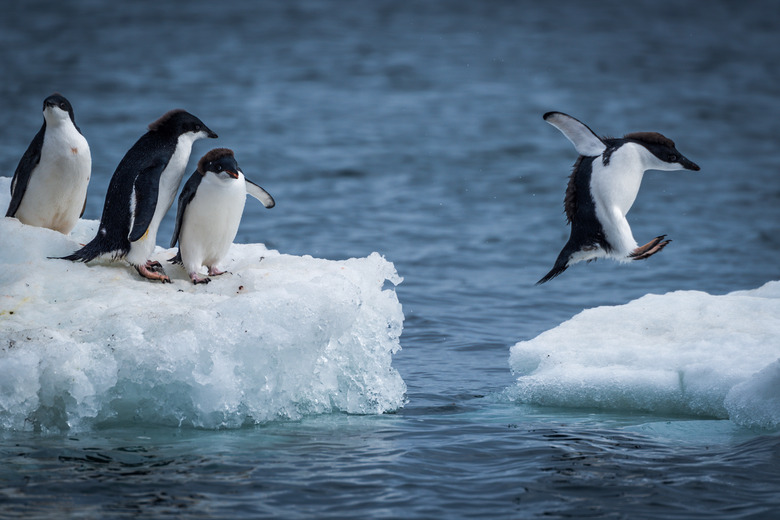What Birds Are Penguins Most Related To?
Penguins are flightless sea birds found mostly in the Antarctic, but they are spread across much of the Southern Hemisphere and rarely cross the equator. In fact, only a small group of wild penguins, who live and breed on Isabela Island in the Galapagos, live in the Northern Hemisphere. Some of their closest relatives in the animal kingdom however, are Northern Hemisphere aquatic birds.
Evolution
Evolution
The oldest penguin fossils that have been found were discovered in New Zealand and are estimated to be 60 million years old. This fossil helped to change the previously held belief that penguins evolved separately from flighted birds, approximately 150 million years ago. The New Zealand fossil shared characteristics with some modern and ancient flighted birds, leading scientists to believe penguins actually evolved from birds of flight about 80 million years ago and are closely related to seabirds like albatrosses, loons and petrels.
Albatross
Albatross
The albatross is a large sea bird that makes its home in the antarctic region, but flies quite literally around the world. It has the longest wingspan of any bird, at 11.5 feet, and has been known fly up to 10,000 miles while hunting food for its young. Like their penguin relatives, albatrosses use their wings uniquely from other birds. While penguins use theirs as flippers to propel themselves through water, albatrosses use theirs as gliders. They are not the most efficient fliers when they flap their wings, but can lock them outwards and glide for hundreds of miles at a time.
Loons
Loons
The loon, of which there are five species, is the closest relative to the penguin living in the Northern Hemisphere. The Common loon is widely found in Canada but migrates south along either coast of the United States in the winter. Their summer habitat and breeding range extends to Northern Canada and even parts of Greenland. Loons have adapted to be excellent divers like their penguin cousins; most of their bones are solid, like the penguin's, not hollow, like those of other birds. This helps the loon dive up to 80 meters, but requires the birds to run on the surface of the water for up to several hundred meters before they can take flight.
Petrels
Petrels
Petrels, like penguins and albatrosses, inhabit the Southern Hemisphere, concentrated largely in the Antarctic region. The giant petrel, the largest species of petrel, has even been known to kill its king penguin cousins and even seals. Typically, petrels feed on carrion. While the giant petrel is an excellent and graceful flier, other species of petrel are characterized by their skittering flight patterns.
Cite This Article
MLA
Reynolds, Jennifer. "What Birds Are Penguins Most Related To?" sciencing.com, https://www.sciencing.com/birds-penguins-related-8235425/. 22 November 2019.
APA
Reynolds, Jennifer. (2019, November 22). What Birds Are Penguins Most Related To?. sciencing.com. Retrieved from https://www.sciencing.com/birds-penguins-related-8235425/
Chicago
Reynolds, Jennifer. What Birds Are Penguins Most Related To? last modified March 24, 2022. https://www.sciencing.com/birds-penguins-related-8235425/



